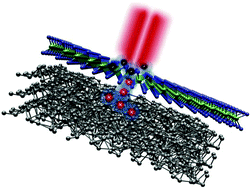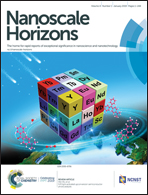Efficient hole transfer from monolayer WS2 to ultrathin amorphous black phosphorus†
Abstract
The newly developed van der Waals materials allow fabrication of multilayer heterostructures. Early efforts have mostly focused on heterostructures formed by similar materials. More recently, however, attempts have been made to expand the types of materials, such as topological insulators and organic semiconductors. Here we introduce an amorphous semiconductor to the material library for constructing van der Waals heterostructures. Samples composed of 2 nm amorphous black phosphorus synthesized by pulsed laser deposition and monolayer WS2 obtained by mechanical exfoliation were fabricated by dry transfer. Photoluminescence measurements revealed that photocarriers excited in WS2 of the heterostructure transfer to amorphous black phosphorus, in the form of either energy or charge transfer, on a time scale shorter than the exciton lifetime in WS2. Transient absorption measurements further indicate that holes can efficiently transfer from WS2 to amorphous black phosphorus. However, interlayer electron transfer in either direction was found to be absent. The lack of electron transfer from amorphous black phosphorus to WS2 is attributed to the localized electronic states in the amorphous semiconductor. Furthermore, we show that a hexagonal BN bilayer can effectively change the hole transfer process.



 Please wait while we load your content...
Please wait while we load your content...
